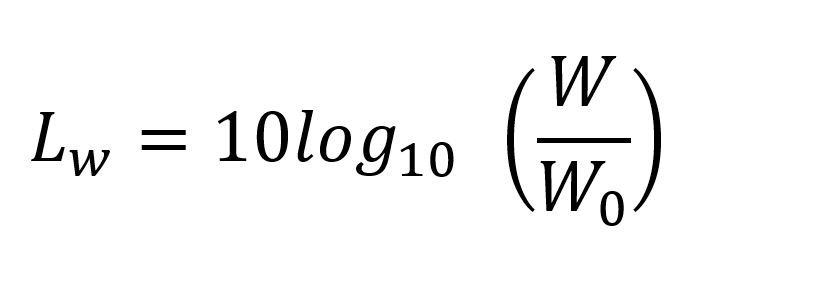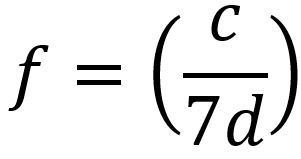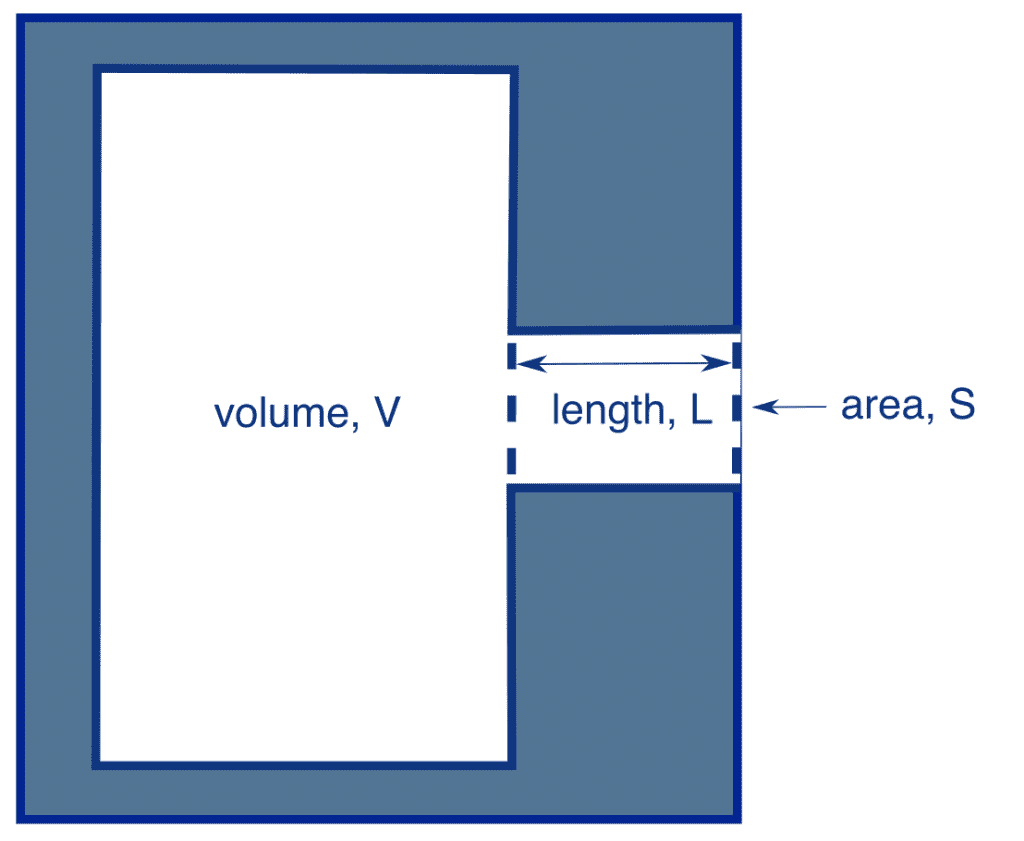Sound
Sound is the vibration of a medium such as a gas, liquid or solid to create an acoustic wave. The speed of sound differs depending on the medium it is passing through. Sound travels much quicker in liquids and solids than in air. Sound also travels quicker at higher temperatures.
Small fluctuations in air pressure can be detected by the ear and are considered to be sound.
What is the Makeup of the Human Ear?
The human auditory system can be broken down into three parts:
- the outer ear,
- the middle ear, and
- the inner ear.

The outer ear comprises the pinna and the ear canal. The main job of the pinna is to ‘collect’ and amplify sound and direct it to the ear canal. The anatomy of the ear also allows spectral filtering and modulation, which provides localisation information for incoming sounds.
The middle ear is the portion of ear internal to the eardrum (tympanic membrane), and external to the oval window. This space, which is known as the tympanic cavity, contains three tiny bones, the malleus, incus and stapes. Collectively they are known as the ossicles. The purpose of the ossicles is to convert sound waves, which hit the eardrum, into vibrations and deliver them to the inner ear. The eardrum activates the malleus which articulates the incus which then connects to the stapes.
The inner ear contains the vestibular system and cochlea. The vestibular system is responsible for balance. The cochlea is a hollow shell-like structure which is responsible for hearing. The stapes presses the oval window which causes waves of the tympanic fluid within the cochlea. The cochlea contains the basilar membrane which is a stiff structural element which runs its full length. The basilar membrane holds millions of tiny hair cells known as stereocilia. Nerve impulses are activated by the stereocilia by the waves in the tympanic fluid. These impulses are sent to the brain where they are converted to what we perceive as sound.
What is Sound Power Level?
Sound Power Level (Lw or SWL) is the total energy generated by a source over a given amount of time and is independent of the acoustic environment where it is located. Sound power cannot be measured directly but is derived from multiple sound intensity measurements taken around the source. Sound intensity is the total energy generated through a unit area over a specified time perpendicular to the direction of the sound waves.
Sound Power Level can be calculated as follows:

Where:
- W = The sound power of the source
- W0 = The standard reference sound power, being the threshold of hearing = 10(-12)
What is Sound Pressure Level?
Sound Pressure Level (Lp or SPL) is the change in pressure of a medium when a sound wave passes through it. Sound pressure can be measured directly in air using a microphone. The measured Sound pressure level is dependent on acoustic environmental factors. Typical environmental factors include:
- Proximity of sound source to reflective surfaces
- Absorption characteristics of the sound source location
- Screening between sound source and receiver / microphone
- Distance between sound source and receiver / microphone
Sound Propagation / Distance Attenuation
Information and calculators for distance attenuation from typical sound sources can be found here.
Diffraction / Refraction / Reflection / Absorption / Diffusion
Sound waves behave differently when the encounter an object depending on the size of the object when compared to wavelength and the absorption characteristics of the object.
What is Diffraction?
Low frequency sounds (low pitched) have long wavelengths, whereas high frequency (high pitched) sounds have short wavelengths.
Low frequency sounds bend around objects which are small in comparison with its wavelength. Whereas high frequency sounds will diffract less when they encounter the same object. Therefore, screening will be less effective for low frequency sounds.
What is Refraction?
Refraction is the change in direction of a sound wave as it passes between mediums of different densities. Sound waves travel faster through denser materials, such as concrete or water. When the sound traveling through air enters a denser material, it bends and also its velocity and wavelength increases.
What is Reflection and Absorption?
Sound waves which do not diffract around an object will impact upon it. The impacted sound wave will either reflect off the object, be absorbed by it or transmit through it. Absorption is the process where sound energy is converted to heat. The three main categories of sound absorbers are:
- Porous absorbers
- Membrane absorbers
- Helmholtz (Resonator) absorbers
Absorbers are generally used when the reverberation time within a room need to be reduced.
Porous Absorbers
Porous absorbers fall into two types, open celled materials and fibrous materials. For open celled materials, the moving air particles generated by the sound waves are pushed through the holes and are converted to heat in the process. For fibrous materials the moving air particles bend around the fibres and again are converted to heat. Porous absorbers are generally more effective for high frequency sounds.
Common examples of porous absorbers are:
- Mineral wool
- Acoustic tiles
- Carpets
- Soft furnishings
Porous absorbers effectiveness at each frequency depends on the properties and thickness of the material, however, the frequency above which they become effective can be approximated with the following formula:
Where:
- f = frequency
- c = speed of sound in air (taken to be 343 m/s at 200C)
- d = the thickness of the material
Membrane Absorbers
Membrane absorbers, also known as panel absorbers, are typically constructed from a thin flexible panel fixed over an enclosed air gap. The absorption is provided by the frictional losses incurred by the sound waves incident on the panel. Membrane absorbers are most effective at low frequencies over a narrow frequency range. A porous absorber, such as mineral wool, can be placed within the cavity to broaden the effective frequency range. An example of a membrane absorber would be a thin flexible sheet of plywood fixed to a wall with timber battens, providing an air gap. The frequency at which they are most effective is a function of the mass of the panel and the depth of the air gap. This frequency can be calculated with the following formula:

Where:
- f = frequency
- m = mass of the panel
- d = the depth of the gap in metres
Helmholtz (Resonator) Absorbers
Typical Helmholtz absorbers comprise a cavity with a port opening. The frequency of which they are most effective is the function of the cross-sectional area of the port, the length of the port and the volume of the cavity. These types of absorbers are only effective in a narrow frequency range centred around the frequency of resonance. The cavity can be lined with a porous absorber, such as mineral wool, in order to broaden the effective frequency range.

The resonant frequency of the system can be calculated as follows:

Where:
- fres = resonant frequency of the system
- c = speed of sound in air (taken to be 343 m/s at 20oC)
- S = cross sectional area of the port
- L = length of the port
- V = volume of the port
Diffusion
Diffusers are typically used to treat rooms by scattering the sound in order to remove echoes and reduce the sense of localisation. Compared to a flat surface which will reflect sound at an angle equal to the angle of incidence, a diffuser reflects/ scatters sound in many different angles. A diffuser also spreads reflections in time as well as direction.

